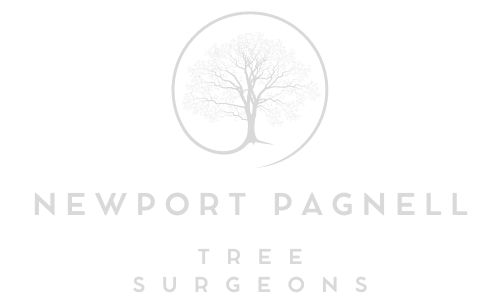How to Spot When a Tree Needs Crown Reduction Urgently
As a homeowner or landowner, it’s essential to maintain the health and safety of your trees. Trees provide beauty, shade, and shelter, but if they become overgrown or damaged, they can pose risks to your property and safety. One of the most important tree care techniques is crown reduction, which involves trimming back the branches and canopy to reduce the tree’s size and improve its health.
At Newport Pagnell Tree Surgeons in Newport Pagnell, Buckinghamshire, we specialise in professional crown reduction services. In this blog post, we’ll explore how to spot when a tree urgently needs crown reduction and why this service is so crucial for maintaining the safety and longevity of your trees.
What is Crown Reduction?
Crown reduction is a tree surgery technique used to reduce the size of a tree’s canopy. Unlike tree topping, which can harm the tree, crown reduction preserves the natural shape of the tree by selectively removing specific branches. This process helps improve the tree’s structure, health, and stability. It can also help prevent damage to property or people in case of strong winds or storms.
1. Overgrown Canopy Interfering with Structures
One of the most common signs that a tree may need crown reduction is when its canopy starts encroaching on nearby structures. If the tree’s branches are touching or hanging over your roof, windows, power lines, or fences, it’s a sign that the tree’s growth is becoming problematic. Not only can overgrown branches cause damage to your property, but they also increase the risk of fire if they are too close to power lines.
- Why it’s important: Regular crown reduction can help prevent tree damage to structures and reduce the risk of potential hazards.
2. Weak or Overextended Branches
If you notice that the tree’s branches are unusually long or heavy, they could be at risk of breaking. Overextended branches, especially in mature trees, can put undue stress on the tree’s structure. This is particularly concerning during storms or high winds, as the extra weight can lead to broken limbs or even the tree itself falling. Crown reduction helps to redistribute weight more evenly and prevent branch breakage.
- Why it’s important: Trimming overextended branches reduces the risk of property damage and keeps the tree in a healthier, more balanced condition.
3. Significant Tree Disequilibrium or Uneven Growth
A tree that has grown in an uneven or unbalanced way may benefit from crown reduction. This often happens when one side of the tree receives more sunlight or resources than the other, causing lopsided growth. Asymmetrical growth can make the tree more vulnerable to winds and storms, as the weight distribution becomes uneven.
- Why it’s important: Correcting the imbalance through crown reduction helps the tree maintain better stability, preventing possible structural failure.
4. Dead, Diseased, or Damaged Branches
If your tree has dead or diseased branches, crown reduction is essential to remove them. These branches not only affect the tree’s health but can also be a safety hazard. Removing damaged or diseased parts helps prevent the spread of infection and encourages healthy regrowth. Dead branches are particularly dangerous as they can break off and cause injury or damage to nearby property.
- Why it’s important: Timely removal of dead or diseased branches ensures the tree remains healthy and prevents the spread of pests or diseases.
5. Reduced Air Circulation or Light Penetration
Overgrown tree canopies can block light and reduce airflow to the inner parts of the tree, leading to poor growth. This can make the tree more susceptible to pests, diseases, and fungal infections. Crown reduction helps to thin out the canopy, allowing more sunlight to penetrate the tree and improving the overall health of the tree by increasing air circulation.
- Why it’s important: Increased light and airflow reduce the risk of fungal infections and allow the tree to grow healthier and more robust.
6. Tree Showing Signs of Stress or Weakness
If a tree begins showing signs of stress, such as wilting leaves, browning branches, or a thinning canopy, it could be a sign that the tree is struggling to manage its own growth. Excessive growth or an unbalanced crown can cause the tree to expend more energy than it can sustain, leading to overall weakness. Crown reduction can help reduce stress and allow the tree to regain its vitality.
- Why it’s important: Reducing the size of the canopy and removing unnecessary weight helps the tree focus its energy on healthier growth, which enhances its longevity.
Conclusion: Protect Your Tree and Property with Professional Crown Reduction
Crown reduction is an effective way to manage a tree’s growth, improve its health, and ensure its safety. By recognising the signs that your tree may need crown reduction, you can prevent further damage and enhance the overall condition of the tree.
At Newport Pagnell Tree Surgeons, we provide expert crown reduction services for trees in Newport Pagnell, Buckinghamshire. Our team is dedicated to helping your trees grow strong and healthy, while ensuring the safety of your property. If you’ve noticed any of the signs mentioned above, don’t hesitate to contact us for a professional tree assessment. We’re here to help you maintain the beauty and safety of your trees for years to come.
Call us on: 01908 103 982
Click here to find out more about Newport Pagnell Tree Surgeons
Click here to complete our contact form and see how we can help with your tree care needs.

